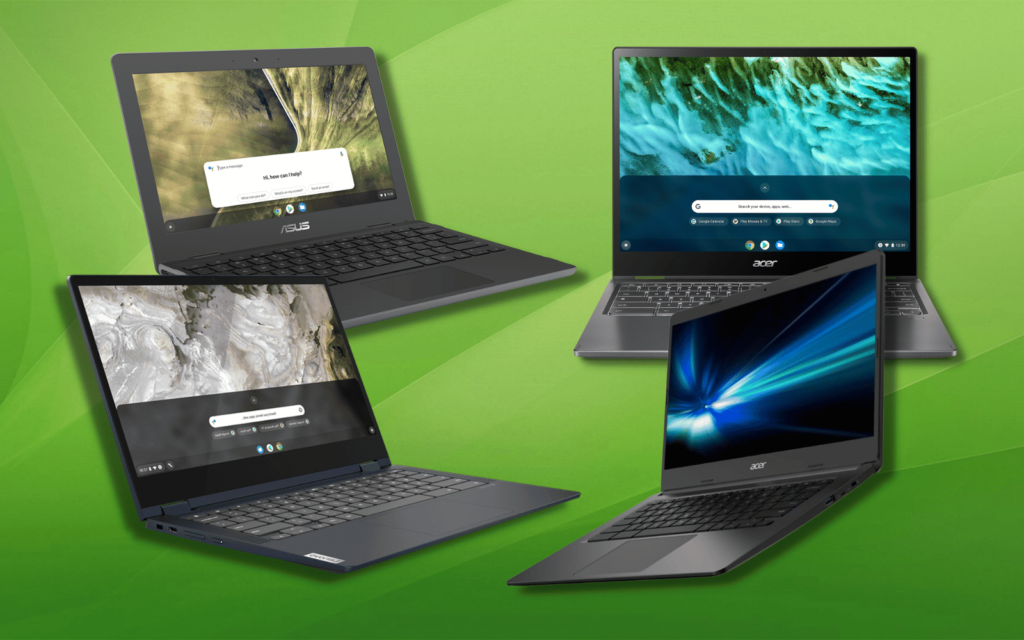The first day of school wraps up and your little one brings you a letter from their school saying they’ll need a Chromebook for this year’s curriculum. Sound familiar?
There are two ways this can go down. Either the school will provide one you’ll have to pay for (or maybe it’s included in the school fees, lucky you), or you need to find one yourself. If the latter is true then you have a decision to make.
But what even is a Chromebook and which one is best? We’re here to make that choice a little easier with z round-up of five Chromebooks at varying prices for your precious little money funnel.
Why aren’t they shiny?
Let’s start at the beginning for the new parents. A Chromebook looks a lot like a laptop but instead of running Windows or macOS as its operating system (OS), it uses the Google-developed Linux-based ChromeOS. This system is designed around the Chrome web browser and is meant for light workflows.
Chromebooks are heavily dependent on an internet connection and leverage Google’s productivity suite with programs like Google Docs for word processing and Google Sheets as an Excel alternative. They also have access to many Android apps through the Play Store and, recently, support a Linux developer environment.
As a result, they often have pared-back internals due to ChromeOS’s relatively low requirements. It is not uncommon to see a Chromebook with an Intel Celeron processor and a mere 4GB of RAM and 32GB of eMMC (Embedded Multi-Media Card) memory – an SD card soldered onto the motherboard. This allows most Chromebooks to come in significantly cheaper than a traditional laptop.
But that isn’t always the case, as you’ll soon discover.
What to look for – primary school
As most Chromebooks are more or less identical at the low end, the first thing to consider is how much you’re willing to spend. We found a common entry point to be around R4,000, extending up to nearly R20,000 at the high end. Sure, your child’s education is important, but so is eating and paying your mortgage.
If your tot is only at primary school, you’ll want to focus on something durable. Even if you opt for the cheapest machine you can find, paying R4,000 every other week because they used it as a rugby tee isn’t sustainable. At this level, the school should cater to the least powerful device so you shouldn’t have to worry about specs.
Asus Chromebook C204
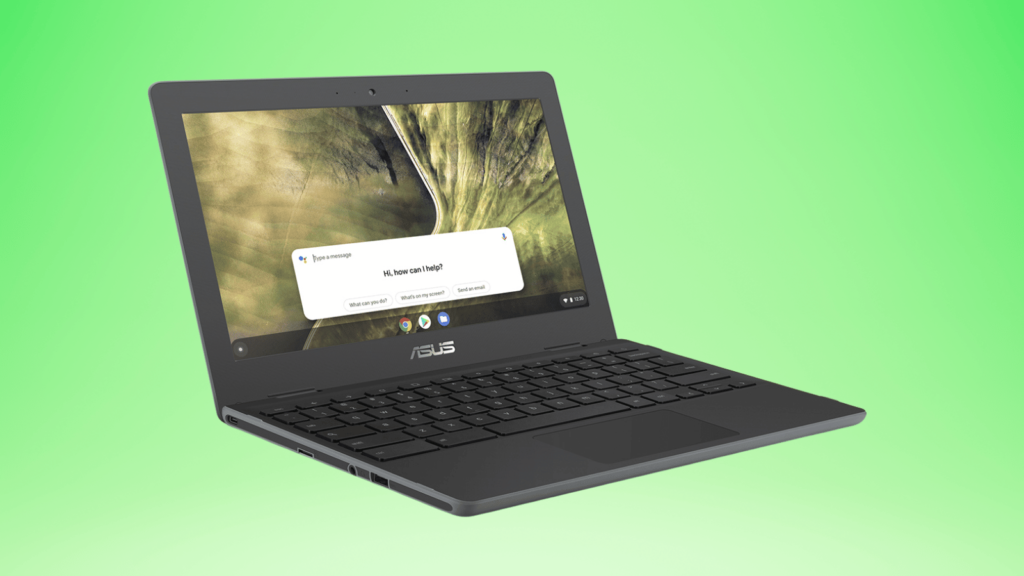 For the wee ‘uns, we recommend the C204 from Asus. At R4,000, this is one of the cheapest Chromebooks available. And that’s not even the best part. This guy has a tough rubber bumper around the four external edges and even passed the MIL-STD-810G standard for durability.
For the wee ‘uns, we recommend the C204 from Asus. At R4,000, this is one of the cheapest Chromebooks available. And that’s not even the best part. This guy has a tough rubber bumper around the four external edges and even passed the MIL-STD-810G standard for durability.
Inside you’re looking at an Intel Celeron N4020 CPU, 4GB of RAM, and 32GB of that terrible eMMC storage. This one comes with an 11.6in touch or non-touchscreen display (go with the non-touch display, it’s cheaper to replace), a 720p webcam, two USB-A ports, two USB-C ports, a microSD card reader, and a combo audio jack. It supports WiFi 5 and Bluetooth 5.1 on the wireless front. But, for us, the standout features are that military-grade durability certificate, spill-resistant keyboard, and up to 12 hours of battery life. Or 12 hours of Cocomelon if you’re that sort of parent.
What to look for – high school
Students starting high school will need a little more processing power than their crayon-eating siblings. At this level, internal specs become more important and the need for durability can take a back seat. Your 14-year-old will, hopefully, understand the concept of things being expensive and the consequences of not looking after their stuff. If not, well… that’s probably your fault.
Jokes aside, you’ll want to look for something with at least an Intel Celeron, AMD Athlon, or Qualcomm Snapdragon processor. That last one isn’t terribly popular in South Africa. Aim for 8GB of RAM if your budget allows. Some teens might not yet be familiar with Google Chrome’s insatiable hunger for RAM and how fifteen open tabs will bog down a system with less memory. Local storage isn’t as important as the CPU or RAM because Chromebooks leverage Google’s suite which includes cloud storage in Google Drive.
Acer Chromebook 314
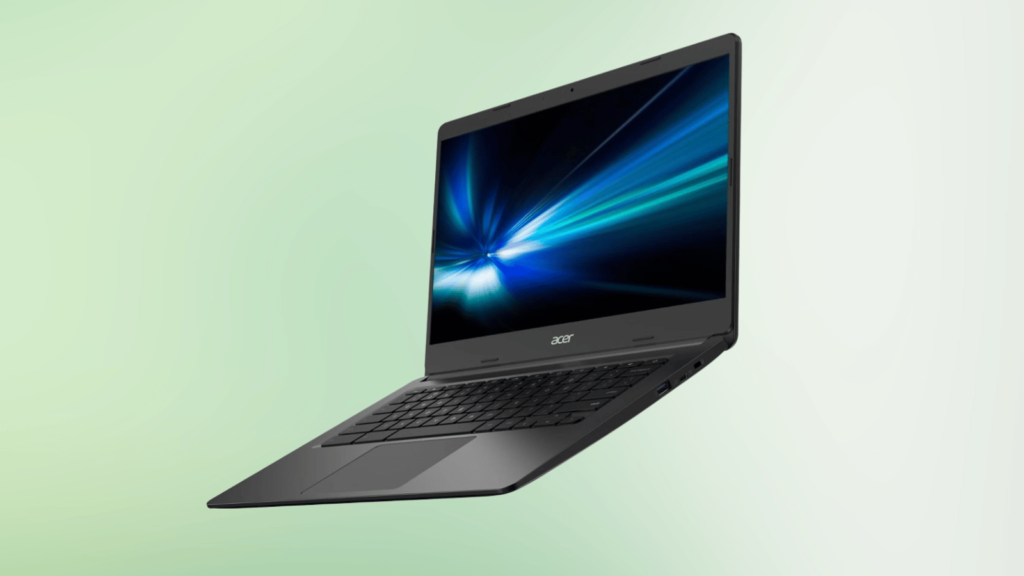 The Acer Chromebook 314 ticks most of the boxes mentioned if you go for this configuration and at R8,000 you won’t have to liquidate assets to afford it. The Intel Pentium CPU is a small step up from a Celeron chip with its two additional cores providing slightly more oomph. Acer markets it as “futureproof processing” but we wouldn’t go that far.
The Acer Chromebook 314 ticks most of the boxes mentioned if you go for this configuration and at R8,000 you won’t have to liquidate assets to afford it. The Intel Pentium CPU is a small step up from a Celeron chip with its two additional cores providing slightly more oomph. Acer markets it as “futureproof processing” but we wouldn’t go that far.
The expanded 8GB of RAM is great for the multitasking student. The 128GB of eMMC storage is a bonus, as is the larger 14in FHD touchscreen display and MIL-STD-810G certificate. Acer says battery life can stretch to 12.5 hours but your mileage will depend on your use. There are two USB-A and USB-C ports along with a MicroSD card slot if more space is needed. WiFi 5 and Bluetooth connectivity are present as is an HD webcam. That’s about as good as the extra features get at this price. Want anything more and you’ll have to cough up more dough.
What to look for – University / Office
Here is where things start becoming a little murkier. At this level, your performance needs dictate that you’re fast approaching (and sometimes exceeding) laptop prices so your first question should be ‘can I get away with a laptop?’
If you or your young adult studies or works with anything STEM-related, then a Windows laptop is probably a better buy. ChromeOS’ biggest limiting factor is the list of apps on offer. Programs like Adobe Photoshop or AutoDesk’s AutoCAD aren’t supported by ChromeOS. It’s possible to get them working but that involves using some sort of virtual environment so performance will suffer.
If a Chromebook is required, it might make more sense to go with a pricier model that will last a full four-year undergraduate degree without slowing down or becoming obsolete in that time. Don’t consider anything with less than 8GB of RAM. Thankfully, many of the models in this price bracket ditch the eMMC storage for a proper SSD. It’ll make a big difference. Pair that with an Intel i5, or AMD Ryzen 5 CPU for maximum Chromebook performance.
If you’re looking for something versatile, some models offer 2-in-1 capabilities for tablet tasks or streaming Netflix in your downtime. If you’re splashing out, it might as well be a big splash.
We found two slightly different Chromebooks towards the top end of what’s on offer in South Africa.
Lenovo Flex 5 Chromebook
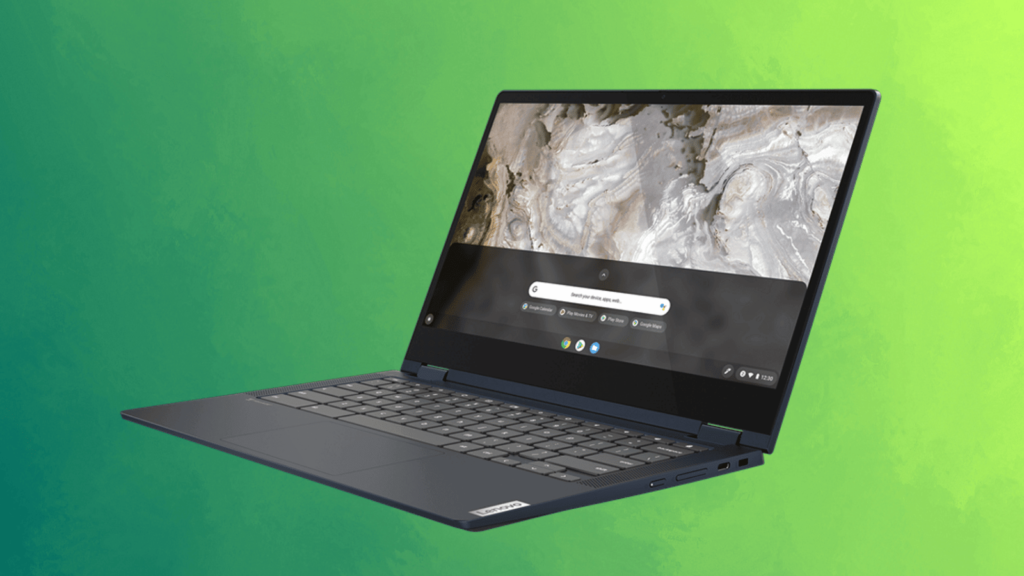 This Lenovo is up first as it’s the (slightly) cheaper of the two. But R14,000 still ain’t cheap. For that, you’re getting an 11th-gen Intel i5-1135G7, 8GB of RAM, and 256GB of SSD storage. This is about as much performance as you could hope for from a Chromebook. The 13.3in touchscreen display offers an FHD resolution (1920×1080) and can flex into tablet mode should the need ever arise. For connectivity, there are two USB-C ports and a single USB-A port for when cables are involved and WiFi 6 and Bluetooth 5 for when they aren’t.
This Lenovo is up first as it’s the (slightly) cheaper of the two. But R14,000 still ain’t cheap. For that, you’re getting an 11th-gen Intel i5-1135G7, 8GB of RAM, and 256GB of SSD storage. This is about as much performance as you could hope for from a Chromebook. The 13.3in touchscreen display offers an FHD resolution (1920×1080) and can flex into tablet mode should the need ever arise. For connectivity, there are two USB-C ports and a single USB-A port for when cables are involved and WiFi 6 and Bluetooth 5 for when they aren’t.
A MicroSD card slot and sub-par webcam are present and stylus support is added, although you’ll have to purchase it separately. With the upgraded internals, battery life drops slightly to around 10 hours. But that should still be enough to get you through a full day unless you live in Yuma.
Acer Chromebook Spin 713
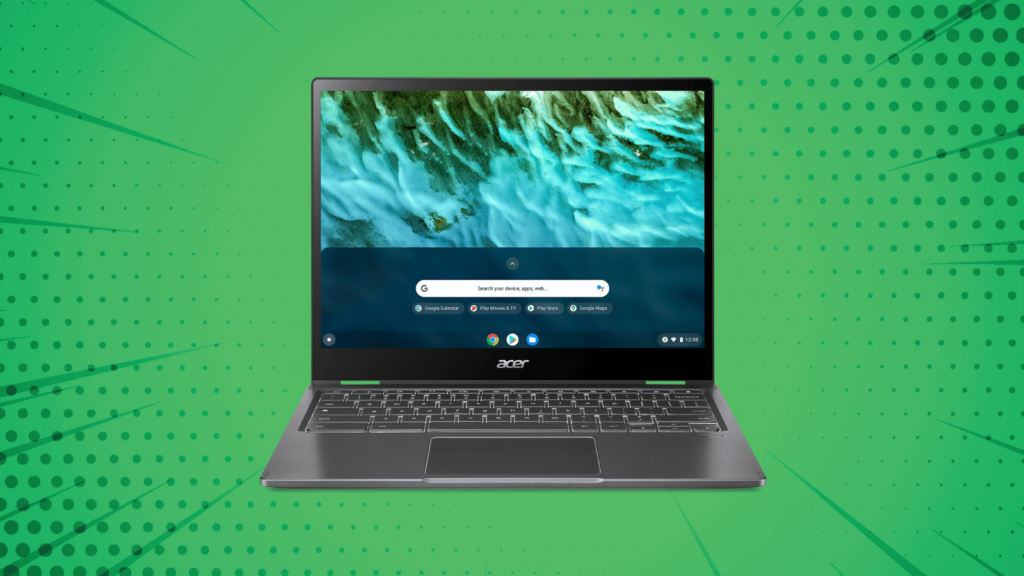 Acer’s Chromebook Spin 713 – which we have a full review on – demands R18,000 from your wallet if you go with the i5 spec. Like the Lenovo, it too features Intel’s 11th-gen Intel i5-1135G7 CPU, 8GB of RAM, and 256GB of SSD storage. This one will also spin ‘round for a standing display or tablet except that here the display is a step up. The crisp 2,256 x 1,504 native resolution and uncommon 3:2 aspect ratio make for one of the best displays we’ve seen on a Chromebook.
Acer’s Chromebook Spin 713 – which we have a full review on – demands R18,000 from your wallet if you go with the i5 spec. Like the Lenovo, it too features Intel’s 11th-gen Intel i5-1135G7 CPU, 8GB of RAM, and 256GB of SSD storage. This one will also spin ‘round for a standing display or tablet except that here the display is a step up. The crisp 2,256 x 1,504 native resolution and uncommon 3:2 aspect ratio make for one of the best displays we’ve seen on a Chromebook.
Like the competition, this one also sports dual USB-C ports, a single USB-A port, 3.5mm combo audio jack, and a MicroSD card slot. Wireless connectivity is the same as the Lenovo with WiFi 6 and Bluetooth 5. Unlike the competition, it also has a full-sized HDMI port for connecting a second monitor. If you absolutely must have a Chromebook, this is one of the most powerful available in South Africa.

